Related Research Articles

The Accademia di Belle Arti di Firenze is an instructional art academy in Florence, in Tuscany, in central Italy.

Higher education in Italy is mainly provided by a large and international network of public and state affiliated universities. State-run universities of Italy are under the supervision of Italian's Ministry of Education. There is also a number of private universities and state-run post-secondary educational centers providing a vocational instruction.
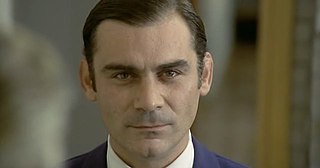
Gian Maria Volonté was an Italian actor and activist. He is best known for his roles in four Spaghetti Western films: Ramón Rojo in Sergio Leone's A Fistful of Dollars (1964), El Indio in Leone's For a Few Dollars More (1965), El Chuncho Munoz in Damiano Damiani's A Bullet for the General (1966) and Professor Brad Fletcher in Sergio Sollima's Face to Face (1967).

The Accademia di Belle Arti di Bologna is a public tertiary academy of fine art in Bologna, in Emilia-Romagna in northern Italy. It has a campus in Cesena.

The Accademia di Belle Arti di Venezia is a public tertiary academy of art in Venice, Italy.
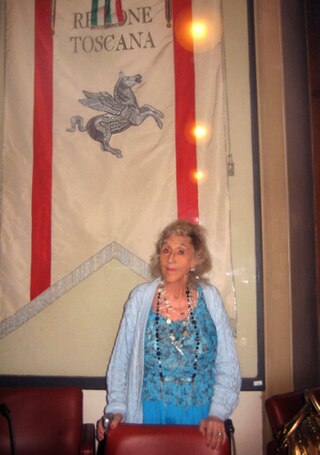
Duccia Camiciotti was an Italian poet, writer and essayist.

The Accademia delle Arti del Disegno is an academy of artists in Florence, in Italy. It was founded on 13 January 1563 by Cosimo I de' Medici, under the influence of Giorgio Vasari. It was initially known as the Accademia e Compagnia delle Arti del Disegno and consisted of two parts: the company was a kind of guild for all working artists, while the academy was for more eminent artistic figures of the Medici court, and supervised artistic production in the Duchy of Florence.
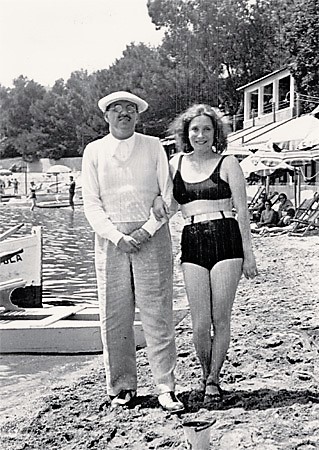
Silvio D'Amico was an Italian theatre critic, journalist, and theorist of Italian theatre. Not a Fascist himself, D'Amico was the major theatre critic during the ventennio, the twenty years (1922–1945) of Fascist rule in Italy. He was the first editor of the nine-volume Enciclopedia dello Spettacolo, published between 1954 and 1965, that covered theatre, music, cinema, and dance. Most notably, he held an eminent position in theatrical study in Italy, giving his name to the Silvio D'Amico National Academy of Dramatic Art in Rome, Italy's most prestigious drama school.
Emanuela Galliussi is an actress in Italian cinema.
Accademia often refers to:
The Accademia di Belle Arti di Bari is a public tertiary academy of art in Bari, in Puglia in southern Italy. It was established on 1 October 1970 and was formally approved by presidential decree on 15 March 1973.

The Accademia di Belle Arti di Carrara is a public tertiary academy of art in Carrara, in Tuscany, Italy. It was founded on 26 September 1769 by Maria Teresa Cybo-Malaspina, duchess of Massa and princess of Carrara; but its origins go back to 1757, when, on the advice of the sculptor Giovanni Domenico Olivieri, she founded the Accademia di San Ceccardo in which sculpture, architecture and painting were to be taught. To house it, she commissioned Filippo del Medico to design and build a new building ; in 1807, by order of Elisa Bonaparte Baciocchi, the accademia was moved the Palazzo del Principe. The school of architecture was at first under Filippo del Medico; Giovanni Antonio Cybei was head of the school of sculpture.
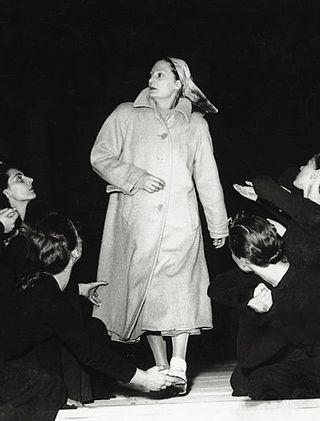
Jia Ruskaja was a Russian dancer and choreographer who established a national dance school in Italy. Her stage name "Jia Ruskaja", which means "I am Russian", was used for the first time by Anton Giulio Bragaglia.

The Accademia di Belle Arti di Perugia is a private tertiary academy of art in Perugia, in Umbria in central Italy. It is not one of the 20 official Italian state academies of fine art, but is legally recognised by the Ministero dell'Istruzione, dell'Università e della Ricerca, the Italian ministry of education and research, which gives its full name as Accademia di Belle Arti Legalmente Riconosciuta di Perugia "Pietro Vannucci". The academy became an autonomous degree-awarding institution under law no. 508 dated 21 December 1999.

Anton Michailovič Milenin is a Russian theatre actor, director and teacher who has worked in Italy and Russia for more than fifteen years, rector of Universal Academy of Hermeneutics.
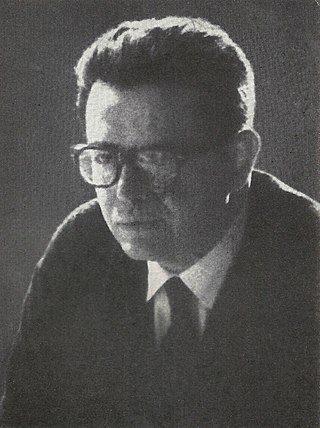
Luigi Squarzina was an Italian theatre dramatist and director.

Angelica Ippolito is an Italian stage, film and television actress.

Sebastiano Lo Monaco was an Italian actor of theatre, film, and television.
Beatrice Aiello is an Italian actress and artist.
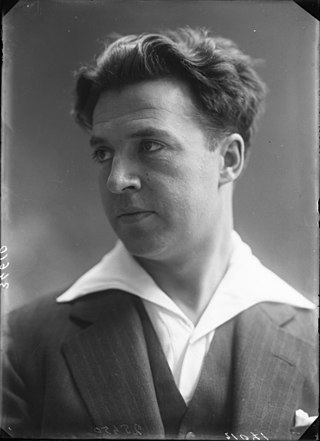
Annibale Ninchi was an Italian actor, playwright and drama teacher. He was the progenitor of a well-known family of actors.
References
- ↑ Don Rubin, ed. (1994). The world encyclopedia of contemporary theatre. Vol. 1. p. 541. ISBN 9780415059282.
- ↑ Van Maanen, H.; Wilmer, S.E. (1998). Theatre worlds in motion: structures, politics and developments in the countries of Western Europe. Rodopi. p. 396. ISBN 90-420-0554-8.
- 1 2 "Accademia d'arte drammatica 'Silvio D'Amico'" (in Italian). Archived from the original on 2 July 2011. Retrieved 14 October 2010.
- ↑ "Riforma delle Accademie di belle arti, dell'Accademia nazionale di danza, dell'Accademia nazionale di arte drammatica, degli Istituti superiori per le industrie artistiche, dei Conservatori di musica e degli Istituti musicali pareggiati". miur.it (in Italian). Archived from the original on 1 October 2011. Retrieved 14 October 2010.
- ↑ "Accademia Nazionale d'Arte Drammatica -SILVIO D'AMICO". Archived from the original on 25 November 2010. Retrieved 14 October 2010.
- 1 2 3 4 5 6 "Accademia Nazionale d'arte drammatica Silvio d'Amico". treccanilab.com. Archived from the original on 4 February 2010. Retrieved 14 October 2010.
- 1 2 3 "Accademia Nazionale d'Arte Drammatica" (in Italian). Archived from the original on 11 September 2010. Retrieved 14 October 2010.
- ↑ "Biography". Fandango. Archived from the original on 2 January 2013. Retrieved 12 October 2010.